The zygomaticomaxillary complex (ZMC) fracture results from a direct blow to the cheek and is characterized by fractures of the:
Zygomatic arch
Lateral orbital wall or diastasis of the zygomaticofrontal suture
Orbital rim and floor
Anterior or posterolateral maxillary sinus wall
A ZMC fracture effectively separates a malar fragment from the rest of the facial skeleton. This fragment can be rotated or depressed. The pterygoid plates are not involved, which distinguishes ZMC fractures from Le Fort fractures.
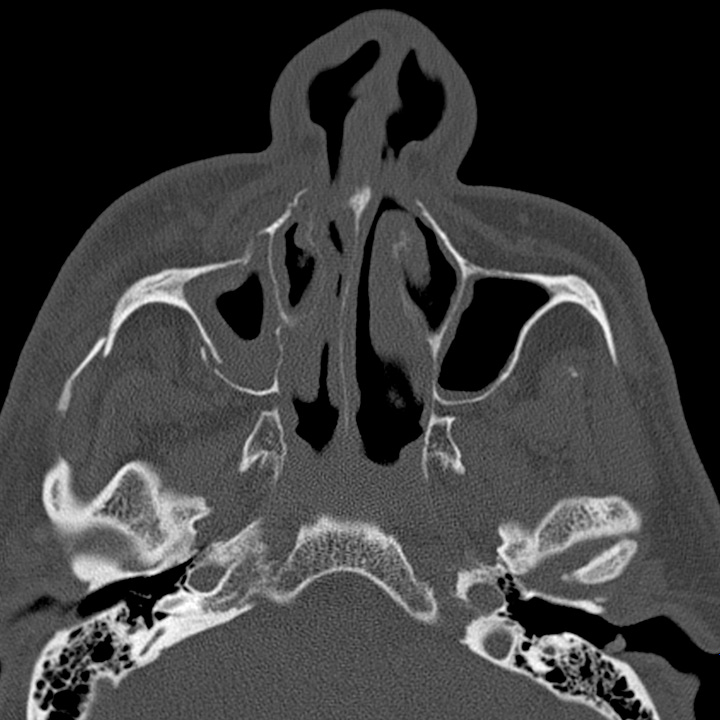
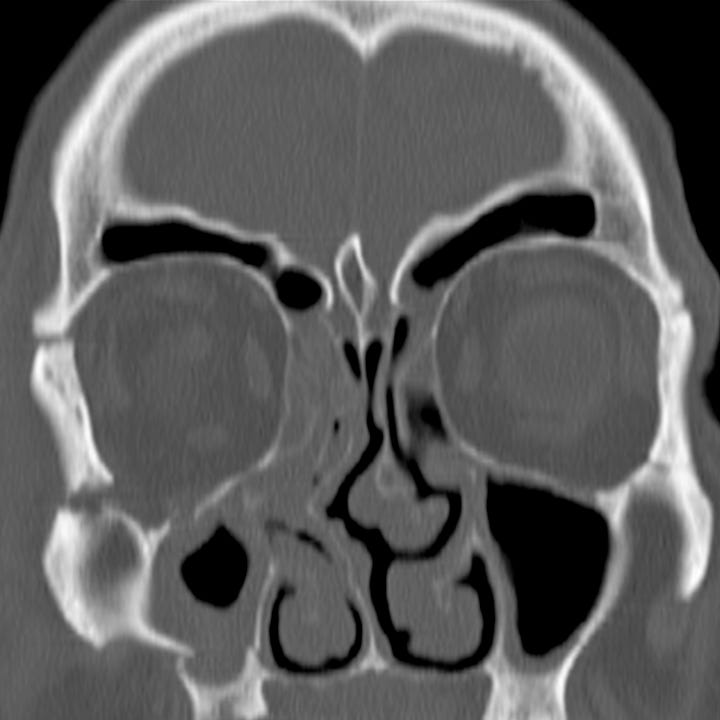
Zygomaticomaxillary complex fracture. Minimally displaced right zygomatic arch, anterior and posterolateral maxillary sinus wall, orbital rim, and orbital floor fractures. Right zygomaticofrontal suture diastasis.

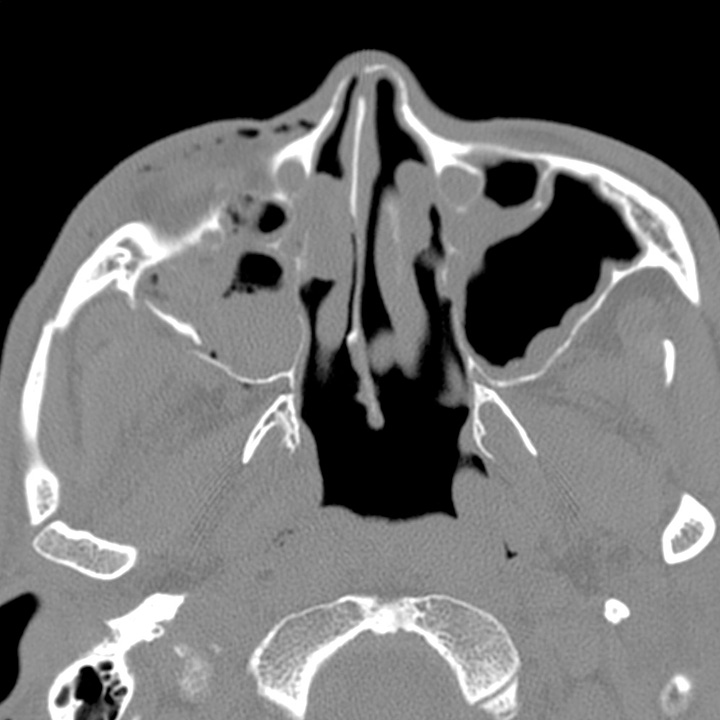
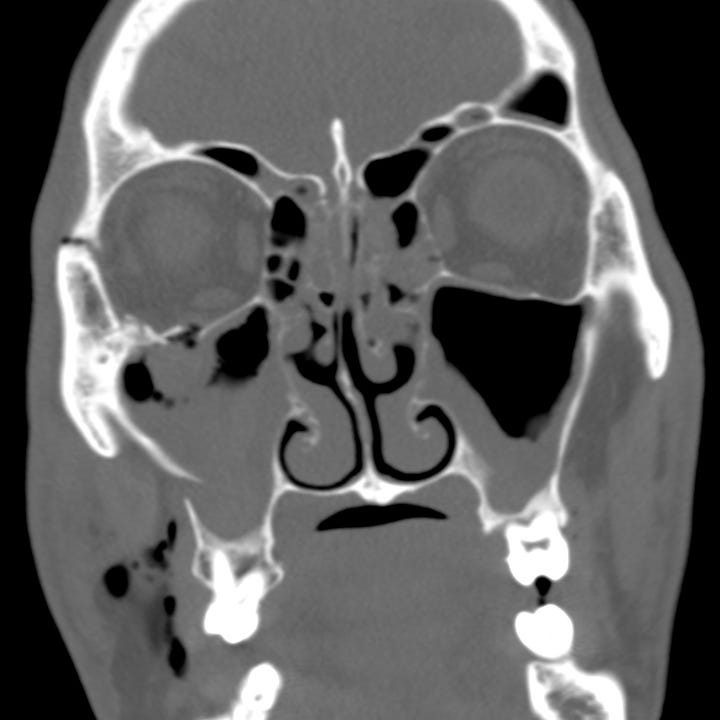
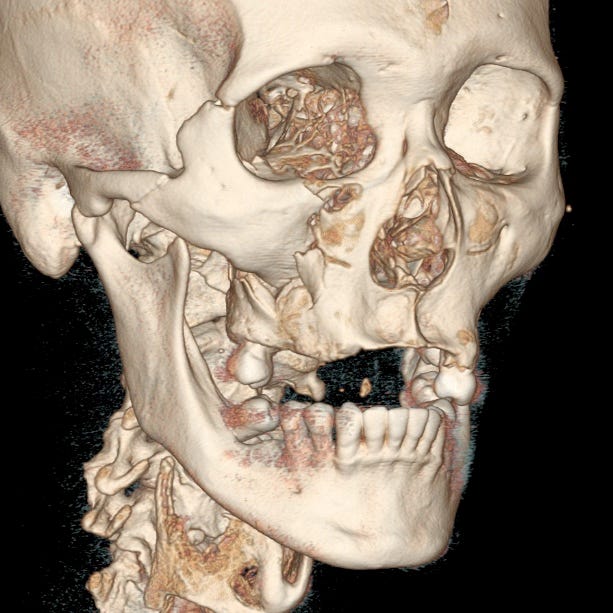
Zygomaticomaxillary complex fracture. Posterior displacement of the malar fragment with soft tissue emphysema. Right zygomatic arch, anterior and posterolateral maxillary sinus wall, orbital rim, and orbital floor fractures. Right zygomaticofrontal suture diastasis. 3D reconstruction shows the malar fragment.
Clinical findings include a palpable step-off at the inferior orbital rim or zygoma, subcutaneous emphysema, and hyperesthesia or anesthesia over the cheek in the distribution of the maxillary nerve (CN V2). Diplopia on upward gaze may be due to orbital edema or impingement of the inferior rectus muscle by an orbital floor bone fragment. Pain with mastication can be due to mandibular coranoid process and temporalis muscle impingement.
CT with multiplanar reformations locates the fracture components, the degree of malar fragment displacement and rotation, and any associated soft tissue or ocular injuries. As in all facial fractures, the infraorbital canal, orbital contents, nasolacrimal duct, and medial canthal ligament attachment should be specifically assessed.




Really good and thorough